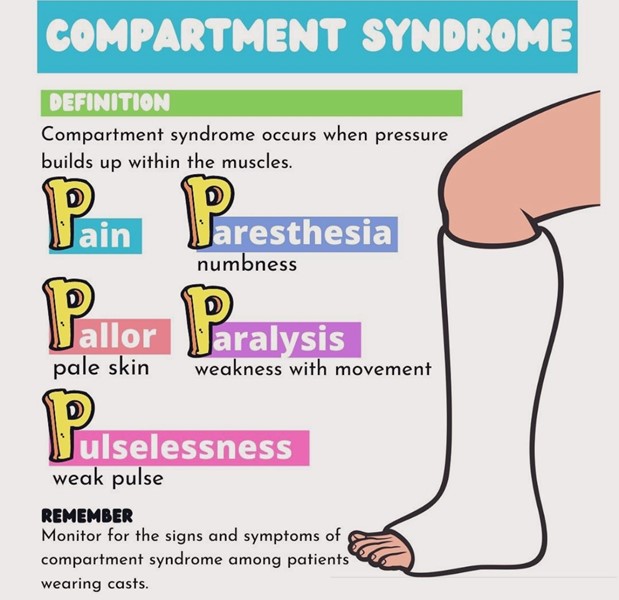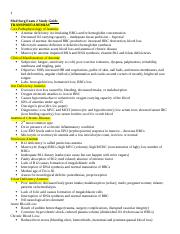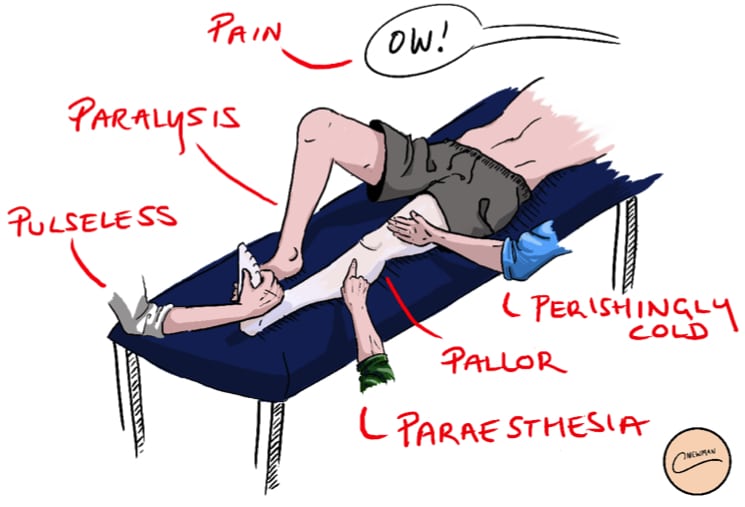
Lonestar Wound Care & Hyperbarics - Common Signs and Symptoms: The "5 P's" are oftentimes associated with compartment syndrome: pain, pallor (pale skin tone), paresthesia (numbness feeling), pulselessness (faint pulse), and paralysis (

Medical and Pharmaceutical - The 6 P's of compartment syndrome: Pain Pallor Paresthesias Poikilothermia Paralysis Pulselessness | Facebook

Duval Vascular - Many patients first experience either one or a combination of pain, pallor, pulselessness, and/or poikilothermia. In other words, they may experience intermittent 𝐩𝐚𝐢𝐧 in their legs or feet, skin

Quiz 1) Trauma and Burns: Severe Right Leg Pain After Tibia Fracture (Compartment Syndrome) Flashcards | Quizlet

MSH AS on X: "3. Limb Examination • Pallor* • Paralysis* • Pulseless* • Tense, wood-like feeling of swollen compartment • Paresthesia* • Pain with passive stretch of compartment* *Classical 5 Ps
















